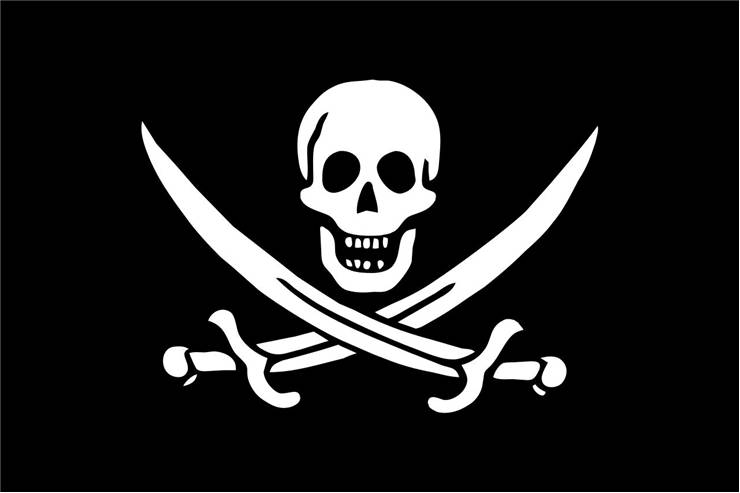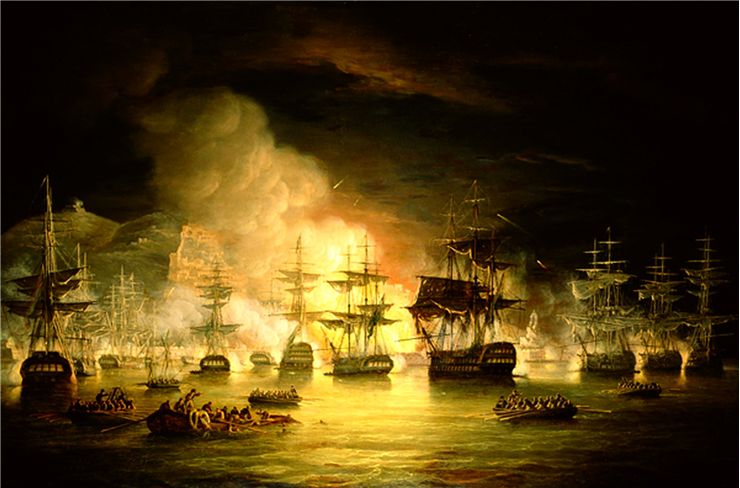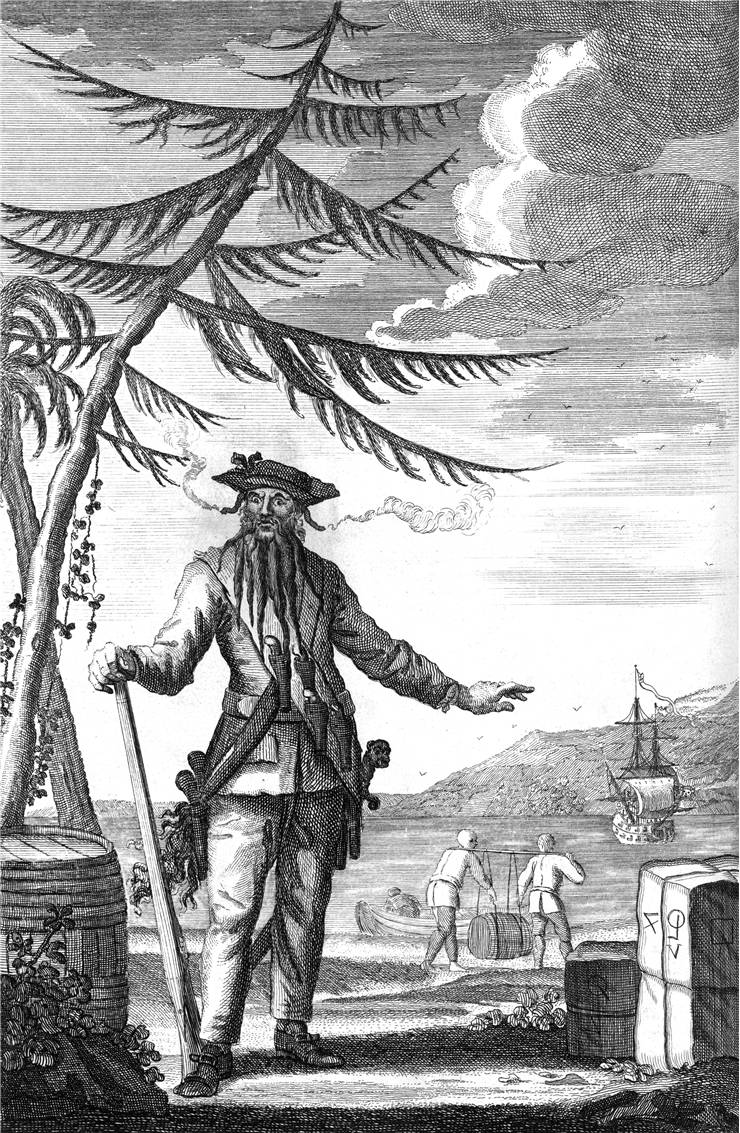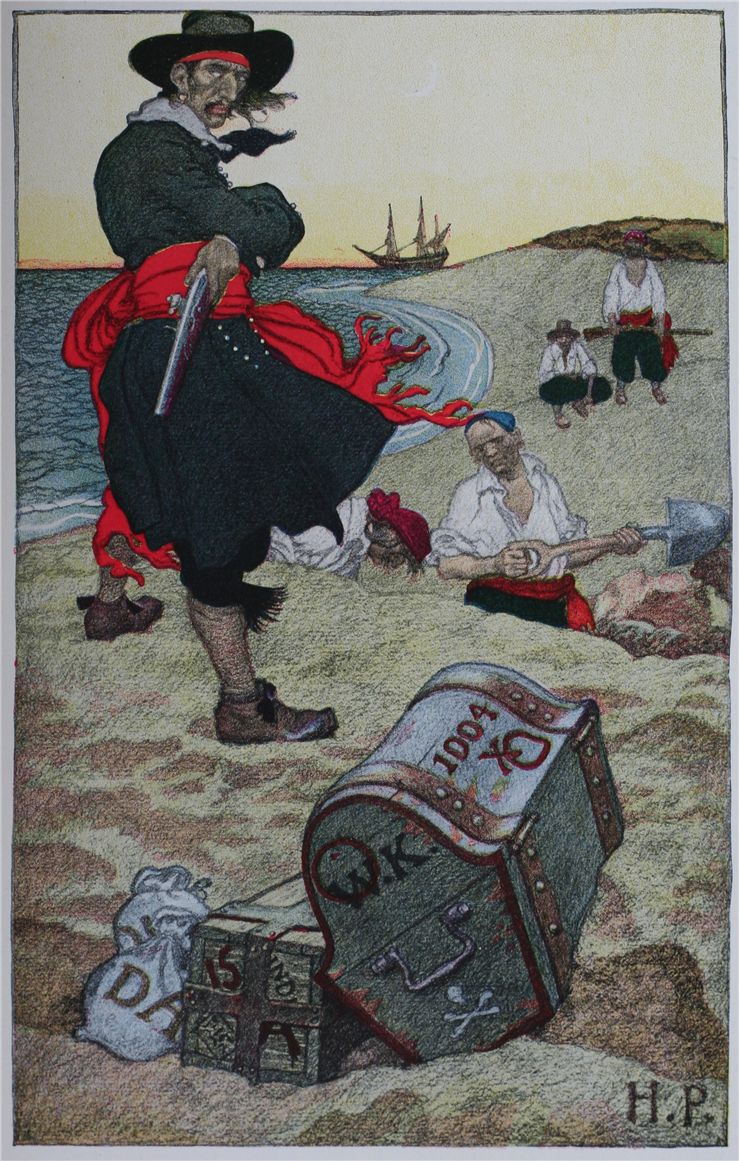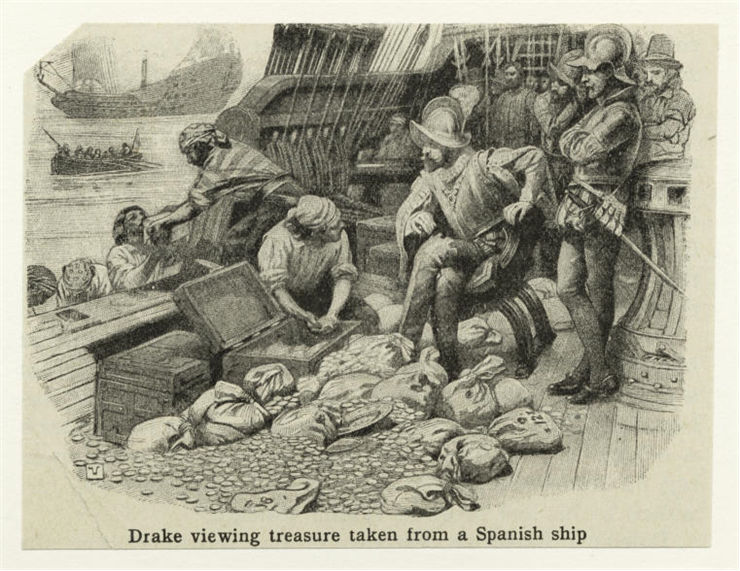Facts about Fictional and Real Pirates
Here you can find everything you want to know about famous pirates and piracy! This site offers a basic introduction to the world of pirates, lots of accurate information about pirate history and legends, and reviews of pirate books, movies, and other fiction.
Famous Pirates
This section is dedicated to the some of the most famous names among pirates, mostly during 16th and 17th centuries in the Caribbean.
History of Piracy
This section covers pirate history, from the ancient times to the present. Find out where the most famous pirate's hideouts were and about the regions where they plied their trade of harassment.
Life of Pirates
The crew structure, code of conduct, life at sea, wealth and plunder, pursuit and punishment, and pirate havens characterized pirate life. While the pirate life has been romanticized in books, movies, and other media, it was a harsh, dangerous, and often short-lived existence for those who chose it. Here you can read everything about pirate culture and lifestyle. What makes them so interesting and how they are affecting today's society. This section covers everything from pirate ships to pirate drinks.
Pirate Fiction
Today, pirate fiction is stronger than ever. No matter if you are looking into the world of books, movies, comics or any other form of entertainment, you can easily discover countless fictional worlds where pirates live their adventures on rough seas (or in some cases even space) and forge their code of honor and narrowly surviving incredible obstacles created by men, nature and even supernatural foes. While this type of fiction is very different from reality, it can wake up in us a spirit of adventure that regularly keeps our eyes glued to the page, film or stage.
Interesting Facts about Pirates
- Pirates are criminals who steal vessels, people, and goods on the sea and in coastal areas.
- Privateers were privately owned ships that captured sea trade under orders from various governments.
- Buccaneers were government-sponsored pirate crews who attacked Spanish ships in the Caribbean during the 17th century.
- Terms privateers and buccaneers are today both synonyms for piracy.
- The earliest example of piracy is recorded in the 14th century BC Mediterranean.
- The attack on Olympos in the 3rd century BC was the first pirate attack that significantly endangered one country.
- Earliest pirates came from first nations who used the ocean for commerce - Illyrians, Tyrrhenians, Greeks, and Romans.
- A pirate who served as the largest motivation for generations of other pirates after him was Henry Every, an English pirate who managed to capture the largest pirate loot of all time and remain free until his death.
- The most common origin of pirates was in the post-war years when military ships and sailors lost their commissions and turned toward a life of piracy.
- Today, when you hear someone talking with a “pirate accent,” know they did not talk like that. English West Country accent was popularized in Hollywood by the two film performances of actor Robert Newton whose roles of Long John Silver (Treasure Island, 1950) and Blackbeard (Blackbeard the Pirate, 1952) forever changed the romanticized way we look at pirates today.
- Most famous pirates during Middle Ages were Viking raiding parties that harassed the Baltic Sea and England and traveled and attacked the waters and coasts of Africa and Italy.
- Piracy in eastern Asia started around the 9th century AD with the rise of several wealthy trading ports.
- The most popular pirate-themed books of all time are Treasure Island (1886) by Robert Louis Stevenson and Peter and Wendy (1911) by J. M. Barrie.
- Even though Edward “Blackbeard” Teach proved to be a formidable pirate during his life, today, he is mostly remembered as the most popular pirate figure in fiction. His exploits were adapted in countless novels, films, and other forms of media.
- Not all pirates chose that life because of severe living circumstances. Wealthy Barbadian landowner Stede Bonne turned to piracy because he loved adventurous life. He was active for one year before he was hanged.
- Africa's most famous pirate nations were Barbary corsairs from ports in Algiers, Tunis, Tripoli, and Morocco. They harassed Europe so much that they enslaved over 1 million Europeans.
- A pirate who managed to collect most treasure was, without a doubt, Bartholomew Roberts. He successfully captured over 470 sea vessels. Pirates with hook hands, wooden peg legs, and parrots on their shoulders were the creation of 18th and 19th-century novelists.
- Barbary pirates created numerous pirate bases all around Africa. One of the larger ones was on Madagascar, housing more than 1000 pirates at the peak of their 17th and 18th-century operations.
- The most famous era of pirates happened between 1650 and 1720 when pirates besieged the seas of the Caribbean, Atlantic Ocean, and Indian Ocean.
- The most accomplished pirate of all time was Henry Morgan, a Welsh buccaneer who plundered Spanish ships and coastal cities in the New World on behalf of the English crown. He was remembered as incredibly ruthless.
- Most pirates during the Golden Age of Piracy were active for only a few years.
- Novelists greatly popularized occurrences of buried pirate treasure. However, in reality, only two such events were ever verified, one by English captain Francis Drake, who buried cargo of Silver, and pirate William Kidd who buried his treasure before he knew he would be arrested. He was sentenced to death, and the treasure was never found.
- In the history of piracy, there were not many women. But several rose to prominence, notably Anne Bonny and Mary Read, who served together on a pirate ship. Anne Bonny was in a relationship with pirate Captain Calico Jack Rackham, who was caught and hanged in 1720. Mary Read died in prison from fever, but Anne Bonny's final fate is unknown.
- The most notorious pirate in the Caribbean was Edward Low. He built his notoriety by cruelly torturing his prisoners before killing most of them.
- Most pirates plundered trading ships and ports because of greed. But "Black Sam" Bellamy was not like that. He called himself the “Robin Hood of pirates” and has ideological justifications for his pirate deeds. His ship was lost in the 1717 storm.
- Pirates used every torture device they could get their hands on, but in all recorded history, they rarely used the wooden plank to force their prisoners to jump into the sea. Most people they wanted to kill were unceremoniously thrown from the ship.
- The legendary pirate flag, known as the Jolly Roger, varied in design from one pirate crew to another. While the classic image of a skull and crossbones is the most famous, different pirates sometimes used variations, including an hourglass, swords, or a complete skeleton.
- Some pirates kept pets on board their ships. It is well-known that pirates had parrots and monkeys as pets. Also, other animals like cats and dogs were present. Cats, in particular, helped control the rodent population on the ship, protecting the crew's food supplies and preventing the spread of diseases carried by rats.
- Pirates hold impromptu "pirate parties" or celebrations called "Pirate's Punch" after successful plunder. These gatherings often involved excessive drinking, dancing, singing, and merrymaking.
- Not a single real pirate treasure map was ever found.
- Pirates wore eye patches not necessarily due to an injury but to have one eye constantly adjusted to the darkness. This enabled them to quickly switch between the bright sunlight on deck and the dark, dimly lit conditions below deck without waiting for their eyes to adjust, particularly useful during battles or navigating the ship's interior.
- Long John Silver, Blackbeard, Captain Hook, and Jack Sparrow are the most popular fictional pirates.
Featured Articles
Anne Bonny
Bonny was a strong, independent woman, who became a respected pirate in a predominantly male society.
Blackbeard
Blackbeard (Edward Teach) was the notorious captain and the most famous pirate ever. His deeds, behavior, and terrifying image made him a perfect villain who harassed many ships in the Caribbean.
Pirate Ranks
What are the roles and positions on pirate ships? Captain, First Mate, Quartermaster, Gunner, and others. Here you can read about duties and the commands chain used on most pirate ships.
